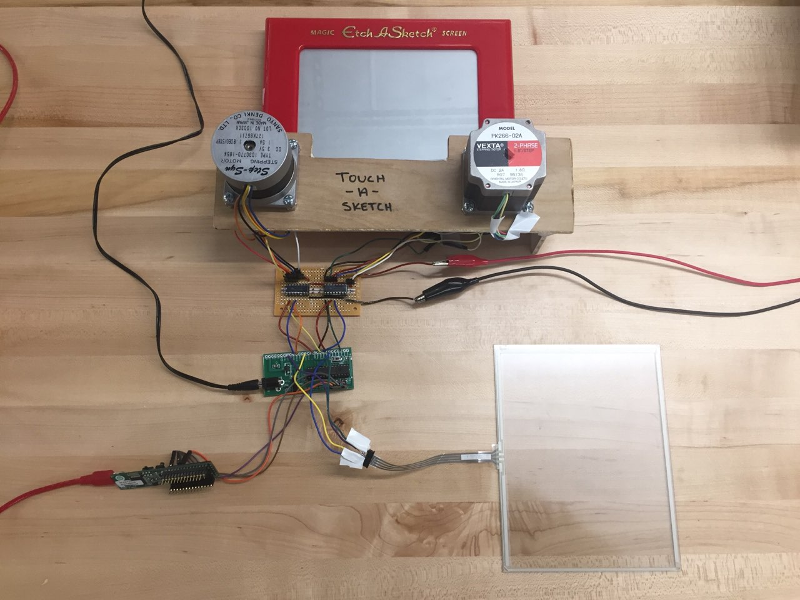After nearly 60 years and a lot of stairs and squares, there is finally an easier way to draw on an Etch A Sketch®. For their final project in embedded microcontroller class, [Serena, Francis, and Alejandro] implemented a motor-driven solution that takes input from a touch screen.
Curves are a breeze to draw with a stylus instead of joysticks, but it’s still a 2-D plotter and must be treated as such. The Touch-A-Sketch system relies on the toy’s stylus starting in the lower left hand corner, so all masterpieces must begin at (0,0) on the knobs and the touch screen.
The BOM for this project is minimal. A PIC32 collects the input coordinates from the touch screen and sends them to a pair of stepper motors attached to the toy’s knobs. Each motor is driven by a Darlington array that quickly required a homemade heat sink, so there’s even a hack within the hack. The team was unable to source couplers that could deal with the discrepancy between the motor and knob shaft sizes, so they ended up mounting the motors in a small plywood table and attaching them to the stock knobs with Velcro. This worked out for the better, since the Etch A Sketch® screen still has to be reset the old-fashioned way.
They also considered using belts to drive the knobs like this clock we saw a few years ago, but they wanted to circumvent slippage. Pour another glass of your aunt’s high-octane eggnog and watch Touch-A-Sketch draw something festive after the break.















When I was a HaD newb, ISTR another EaS that used motors on the knobs.
The output side of this was done by Peter A. Lucas, in Byte Magazine (Feb 1979, pg 66) and Robert K. Newcomb did a follow up (Feb 1980, pg 202.) It is interesting how good ideas keep going around. The Etch-A-Sketch is a great little toy (you can even get tiny pocket-sized versions,) and, as Peter says, has some cool mechanisms for XY plotting.
I love the idea that the design team came up with to use Velcro – brilliant in it’s simplicity.
I remember the Byte article. But I recall it not being a novelty, it was seen at the time as a serious attempt at a display. Unless you made an X-Y printer, or found one cheap in surplus, this had potential at the time.
I seem to recall a much later article, maybe it was in Radio-Electronics, about using a dot-matrix printer as the basis of an X-Y printer, using the printer as a foundation. And early hobby talk about 3D printers seemed to suggest starting with a dot-matrix printer.
Michael